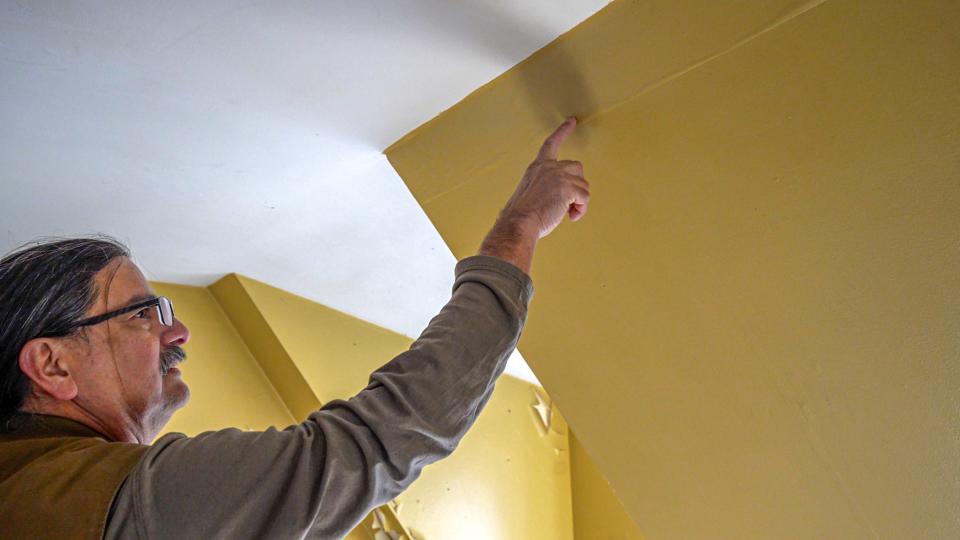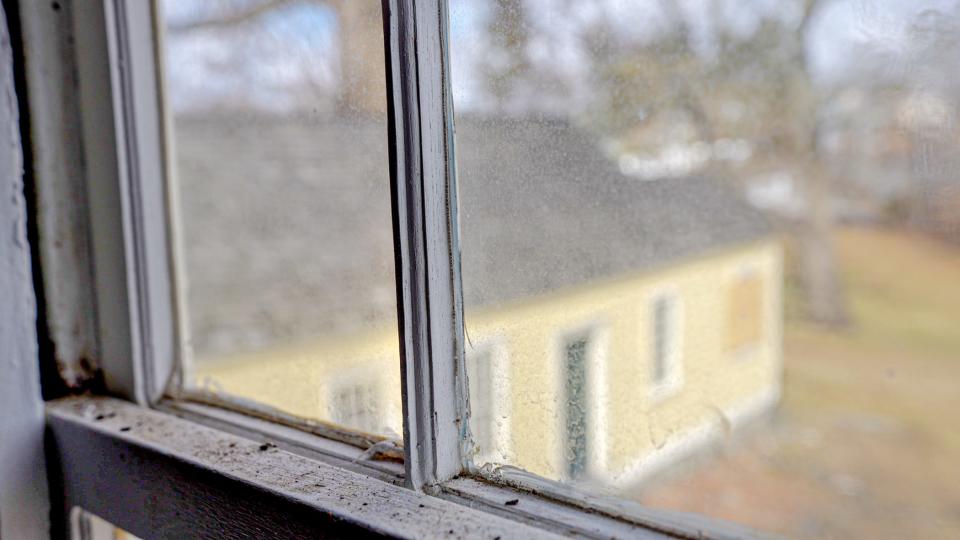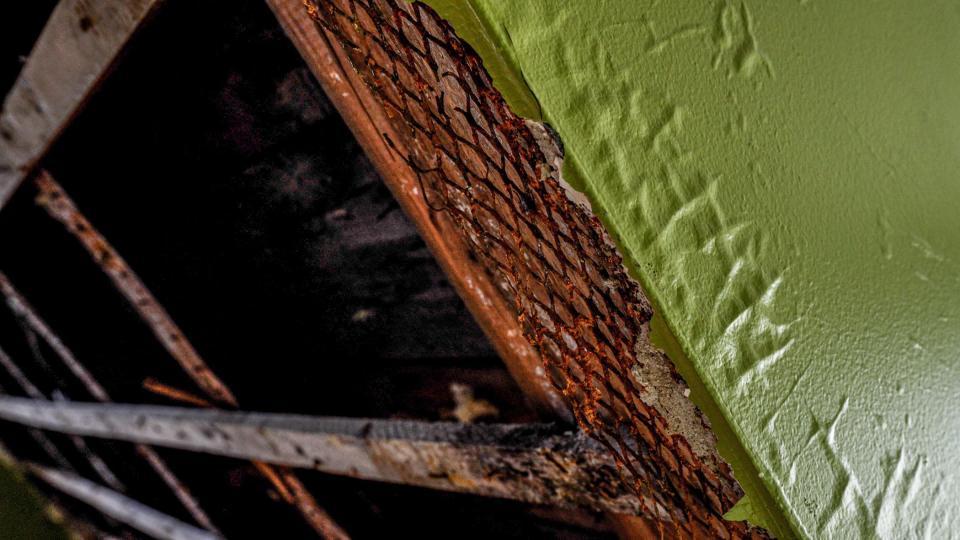Water damage is common in old houses. This RI nonprofit teaches you how to fix it
When it comes to old house problems, the 1756 Esek Hopkins house has them.
And water might be enemy number one.
The worst of the water damage happened in 2023 when the pipes froze in the Providence-owned building during a period when it was unoccupied. The broken pipes led to a gutted bathroom, a gutted kitchen and torn out patches of plaster.
But that’s not the only problem. There are places in the roof where you can see daylight streaming through from the attic and if you go down several levels there are damp spots in the basement. There are places where the paint has bubbled up and mysterious brown stains mar parts of the ceiling. And, there’s places where the floor has buckled or even more obviously, wood has rotted.

All in all, it’s a perfect example of an old water-damaged house, which has made it the perfect learning lab for the Building Works program run by the Providence Preservation Society.
The Building Works program offers both professional training for people who want to work in preservation trades and training for homeowners, renters and community stewards.
So, if any of the above sounds like what’s happening in your old house, they can help. Beyond the classes they offer for homeowners, here are some of their tips.
What to look for in your yard to help with water control?
Starting in your yard, the first thing to look at is the grading of your property, according to Noel Sanchez, who owns Casa Buena Builders and teaches classes with Building Works.

“You want to put the water in the ground somewhere, but there, right?” Sanchez said, pointing against the foundation. “I would say at least 10 feet from this foundation.”
In some cases, they might mean regrading the yard, but other things can help.
One suggestion is to add some foundational plantings that will help absorb some of the water. Nothing fancy, he said, something like evergreen shrubs is effective.
Gutters can help too, but he cautioned homeowners have to clean them or have them cleaned regularly, even if they have the leafguard. And he recommends getting the biggest downspout possible to move the water further away from the house.
Managing the outside groundwater will help to keep the basement drier.
What to look for in your house for signs of water damage?

Inside your house, there are a few giveaways for water damage. Beyond pools of water, here are the top three things Sanchez recommends looking for.
Stains on the ceiling.
Bubbling or peeling paint
Rotting wood, particularly under windows, around bathtubs, and under sinks and toilets.
What are some things homeowners can do to help prevent water damage?
The best defense is a good offense.
To stay ahead of water damage, homeowners should stay ahead of maintenance work. Here are some of Sanchez’s top tips.
Paint: Paint isn’t just about color. Your exterior paint is also there to help protect your siding, and doing it regularly – about every 5 or 6 years, he said – helps prevent it from becoming a much bigger project. Interior painting, he said, tends to help homeowners notice things that may need to be fixed.
Keep your home temperature consistent: There’s a tendency to change up the thermostat depending on what time of day it is, particularly to make the house cooler at night to lower heating costs. But in older homes where there is often very little insulation that can be a recipe for pipes freezing as the water just sits in the pipe overnight, Sanchez said. To protect the pipes, it’s better to keep the house temperature consistent.
Use your extractor fans: Anywhere you have an extractor fan in your house – the bathroom, the kitchen – use it. Leave it running for 10 or 15 minutes after taking a shower or cooking, to pull the moisture out of your house so it doesn’t build up somewhere else.
Keep an active eye on the house: Living in a house is good for a house. It gives people a chance to catch issues early, and the coming and going from a house can help give moisture a chance to exit the house to. Some old houses are vacation homes or aren’t inhabited all the time for other reasons, but Sanchez recommends at least having someone regularly check on the house.
This article originally appeared on The Providence Journal: What does minor water damage look like? This RI nonprofit can tell you

